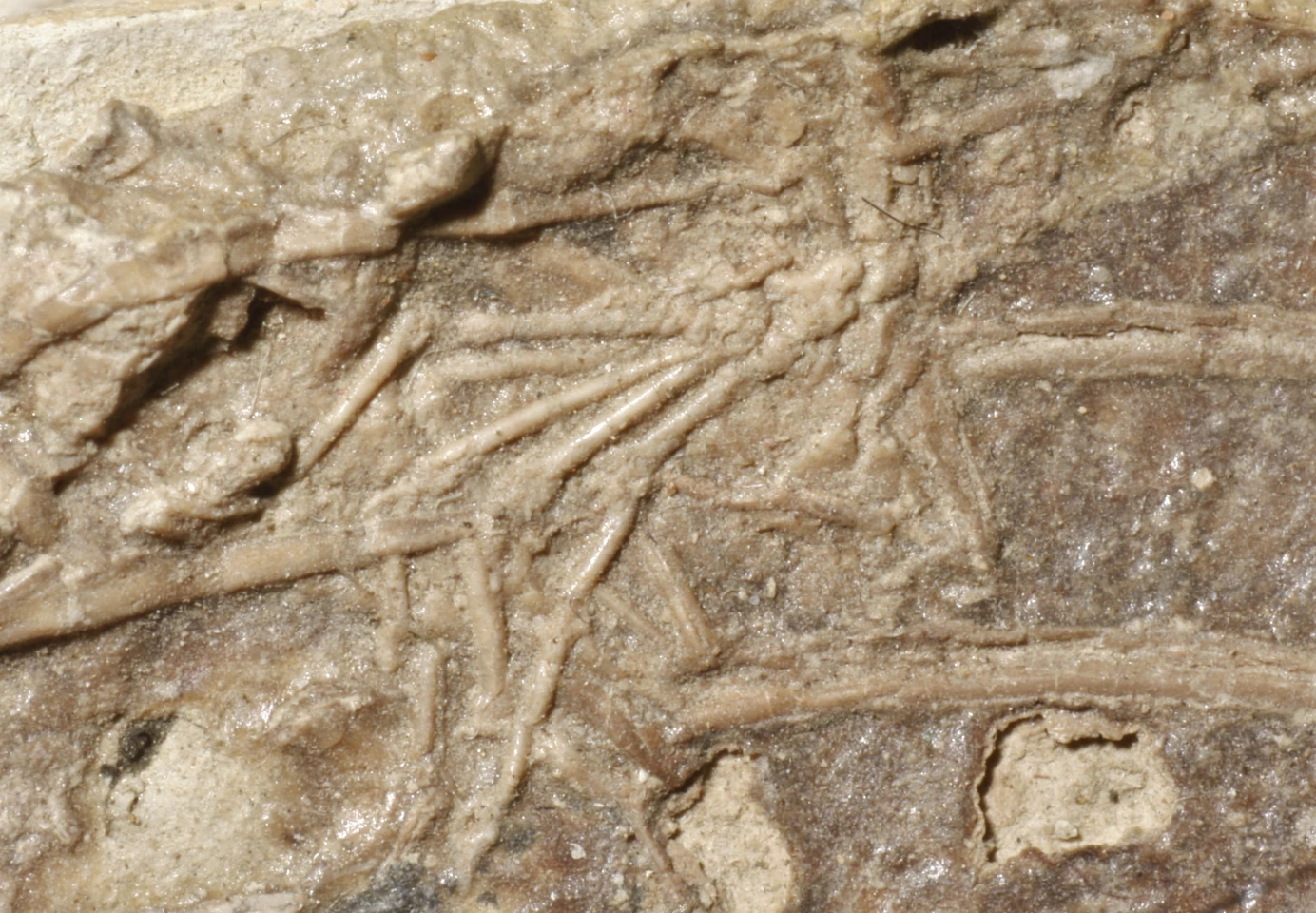It has long been known that some of the earliest mammals coexisted with the later-period dinosaurs. Now, for just the second time ever, scientists have documented fossil evidence of a dinosaur having actually eaten one of those mammals.
The dinosaur in question was a Microraptor zhaoianus, the fossilized partial skeleton of which was unearthed from a prehistoric lake bed in what is now northeast China. Microraptors in general were feathered carnivorous bipeds which grew to less than 1 meter (3.3 ft) in length. They lived in the early Cretaceous period, about 125 to 122 million years ago.
This latest individual contained one foot of a mouse-sized mammal within its rib cage, indicating that the appendage was in the dinosaur's digestive tract when it died – the exact species of mammal has yet to be determined. The fossilized foot was noticed by Prof. Hans Larsson from Canada's McGill University, when he was inspecting museum collections in China.
It is still unclear whether the Microraptor actually hunted and killed the mammal, or simply scavenged remains that it came across. In any case, the only other previous example of such a discovery was when the bones of an early mammal known as a symmetrodont were found in the fossilized gut section of a small carnivorous dinosaur called Sinosauropteryx.

Paleontologists already suspected that Microraptors had a fairly broad diet, due to the fact that species diversity is greater at small body sizes. In other words, Microraptors only ate animals smaller themselves – which larger dinosaurs would ignore – and there was a wide variety of species which fit that bill.
This latest discovery bolsters that theory considerably.
"We already know of Microraptor specimens preserved with parts of fish, a bird, and a lizard in their bellies. This new find adds a small mammal to their diet, suggesting these dinosaurs were opportunistic and not picky eaters," said Larsson. "Knowing that Microraptor was a generalist carnivore puts a new perspective on how ancient ecosystems may have worked and a possible insight into the success of these small, feathered dinosaurs."
The only other known
A paper on the research – which also involved scientists from the University of Alberta, Queen Mary University of London, Mount Mary College, and the Chinese Academy of Sciences – was recently published in the Journal of Vertebrate Paleontology.
Sources: McGill University, University of Alberta via EurekAlert





